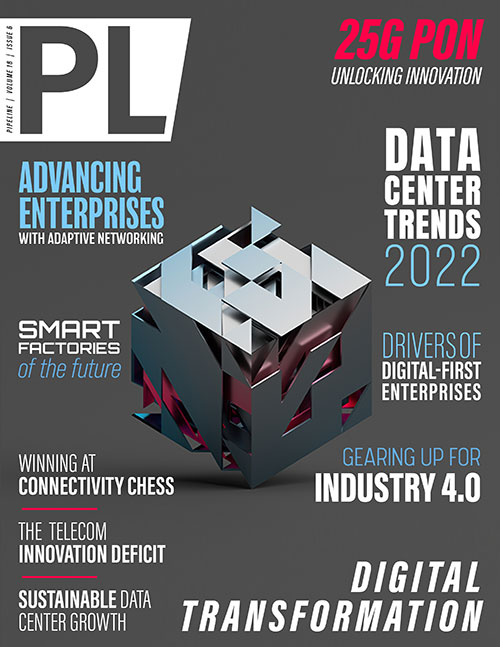Gearing Up for Industry 4.0 with 5G and Native AI
By: Subhankar Pal

The Internet of Things (IoT) is a major business opportunity for mobile operators. That’s why 5G is designed from the ground up to support demanding IoT use cases and requirements—including ones that 4G and Wi-Fi find challenging to handle.
For example, 5G has three feature sets that are ideal for Industry 4.0 applications. These include Ultra-Reliable Low-Latency Communications (URLLC), which reduces latency to as little as one millisecond, key for mission-critical use cases such as time-sensitive networking (TSN), and Massive Machine-Type Communications (mMTC), which enables 5G networks to support up to one million IoT devices per square kilometer, such as autonomous material handlers, industrial robots and sensors. The last feature set is Enhanced Mobile Broadband (eMBB), which supports bandwidth-intensive applications such as 4K video cameras in and around a plant to monitor production, employee safety and physical security.
Even with these and other advanced capabilities, mobile operators will need additional tools to ensure that their 5G networks can take full advantage of the IoT opportunity. This is also the case for operators of private 5G networks, which 76 percent of manufacturers plan to deploy by 2024, according to an Analysys Mason survey.
Beyond baseline 5G
Artificial intelligence and machine learning (AI/ML) provide the foundation for Industry 4.0 and the benefits they enable. The mission-critical use cases in Industry 4.0 demand ultra-real-time AI/ML performance. So, 5G can’t just be AI enabled. It must be AI native.
AI native is when AI/ML capabilities are built inside 5G network functions. One example of this has been to integrate AI/ML to enhance the radio access network (RAN) medium access control (MAC) scheduler. Thanks to this capability, the network can intelligently boost quality of experience (QoE) with ultra-real-time predictive analytics. QoE is critical for use cases like smart manufacturing where technologies such as digital twins can improve shop floor performance and enhance safety by providing remote human assistance through immersive experiences.
What’s more, this kind of AI/ML enhancement also does not have to lock the operator into a proprietary ecosystem, and suffer from vendor lock-in. Operators can benefit from Open RAN (O-RAN) guidelines with more choice and flexibility to maximize spectrum efficiency. This allows them to overcome one of the major limitations of today’s RAN architecture: radio resource management can be static and unable to adapt quickly to changing traffic conditions and subscriber behavior.
This example also highlights how AI/ML will fundamentally transform 5G communication systems and how they will be designed and deployed in the future. AI/ML will have the capability to even control parts of the physical (PHY) and medium access control (MAC) layer functions. All of this directly benefits IoT, a plethora of Industry 4.0 use cases and more—now and well into the future.
Optimizing efficiency and performance
Many manufacturing IoT applications are designed to maximize efficiency. Just as how AI/ML can transform 5G networks, it can do the same for manufacturing IoT applications. Here it can reduce the amount of radio resources, electricity and spectrum required. Of course, the savings in electricity can help operators boost their green credentials and deliver CAPEX and OPEX savings. In the case of a public 5G network, for example, CAPEX and OPEX savings can help the operator price its services competitively yet profitably—a major benefit in the notoriously cost-sensitive IoT market.
These benefits are possible even in demanding use cases. For instance, when IoT applications such as live 4K video require ultra-fast gigabit speeds, they will not require



















